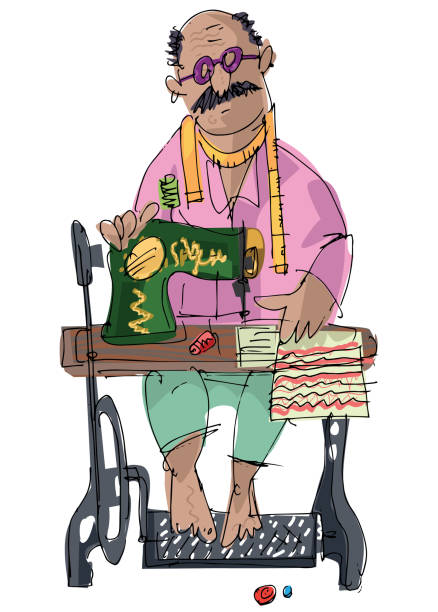Comprehending the Tailoring Refine: From Textile Option to Last Fitting for the Perfect Wardrobe
The customizing process is an intricate interplay of art and scientific research, beginning with the essential choice of material option and culminating in the specific modifications of final fittings. Each material kind brings special high qualities that affect not just the aesthetic allure yet also the garment's longevity and viability for various celebrations.
Significance of Material Selection
Choosing the ideal fabric is essential in the tailoring procedure, as it directly affects the convenience, resilience, and general aesthetic of the final garment (tailor perth). The option of fabric sets the foundation for the garment's style, efficiency, and performance. Various materials have one-of-a-kind properties, such as weight, breathability, and stretch, which can substantially influence just how the garment drapes and fits the body
Moreover, fabric choice affects the garment's durability and simplicity of care. High-grade textiles can withstand damage, keeping their look and framework gradually, while lower-quality products might lead to pilling or fading. Furthermore, the ideal material adds to the garment's ability to transition throughout occasions and periods, thereby boosting versatility.
A customized item made from an ideal fabric not just showcases workmanship however also boosts the wearer's confidence. Consequently, recognizing the subtleties of fabric option is extremely important for any kind of customizing endeavor. It ensures that the end product not only satisfies the visual wishes of the customer yet also lines up with functional requirements, consequently achieving a harmonious equilibrium between kind and function in the tailored closet.
Kinds of Fabrics and Their Usages
Understanding the numerous kinds of fabrics offered is important for making notified decisions during the customizing procedure. Each textile has one-of-a-kind features that determine its viability for particular garments and occasions.
Cotton, known for its breathability and gentleness, is suitable for informal wear and summer season apparel. Its flexibility permits it to be customized into whatever from tee shirts to dresses. Woollen, on the other hand, is favored for its warmth and structure, making it an exceptional selection for formal matches and outerwear - tailor perth. Its natural elasticity helps garments maintain shape with time.
Silk radiates luxury and is light-weight, making it perfect for eveningwear and delicate blouses; nonetheless, it calls for cautious handling because of its delicacy. Linen, with its textured finish, is a prominent choice for cozy climates, offering a crisp and airy feeling, however it wrinkles easily, which might affect the garment's appearance.
Artificial materials, such as polyester and nylon, deal sturdiness and resistance to wrinkles, making them appropriate for everyday wear and active garments. Understanding these fabric kinds and their properties permits better decision-making, making certain that each customized piece not only fits well but additionally aligns with the intended function and occasion.
The Tailoring Methods Clarified
The art of customizing counts on a selection of methods that transform fabric right into well-fitted garments. Central to this procedure is pattern preparing, where a dressmaker produces themes based on the customer's measurements and wanted design. This preliminary action makes certain that the garment will fit the user effectively prior to any cutting takes place.
Once patterns are established, cutting techniques enter play. Accuracy is paramount as inaccuracies can bring about misfitting garments. Tailors commonly utilize different reducing techniques, such as single-layer cutting for detailed layouts and multiple-layer reducing for performance on basic patterns.
Basting is one more vital strategy, permitting tailors to briefly sew fabric assemble for a preliminary fitting. This technique uses the chance to assess the drape and overall silhouette prior to last stitching.
Seaming strategies, including french seams and flat-felled seams, enhance the garment's longevity and aesthetic charm. Tailors likewise utilize strategies such as interfacing and padding to offer framework and form to specific areas, like collars and shoulders.
Finally, completing strategies, consisting of hemming and side ending up, make certain the garment's long life while supplying a polished appearance. Together, these methods form the foundation of efficient customizing, causing beautiful, tailor-made garments.
Fitting Changes and Factors To Consider

Trick factors to consider include the shoulder fit, which needs to neither droop neither limit movement, and the sleeve size, which ought to enable comfortable arm movement while maintaining a sleek appearance. In addition, changes at the midsection can refine the shape, with choices to let out or absorb textile as required.
The rise of pants is one more crucial factor; it ought to sit comfortably over the hips without causing discomfort, enabling convenience of movement. Hemming lengths for both pants and skirts should mirror the wearer's preferred style while respecting proportions.

Maintaining Your Tailored Attire
Appropriate upkeep of tailored garments is essential to protecting their fit and appearance over time. To guarantee longevity, regular cleansing is vital. Constantly adhere to the care tag guidelines, which may recommend completely dry cleaning for delicate textiles or device washing for more sturdy products. Avoid constant laundering, as this can put look at here now on down the material and change the garment's form.
Storage is equally vital; usage padded wall mounts for jackets and coats to keep shoulder structure, and shop pants folded up nicely or hung to prevent creasing. Secure garments from straight sunlight, their explanation which can discolor colors and damages fibers.
Furthermore, routine evaluations for small fixings can avoid bigger concerns. Look for loosened buttons, tearing joints, or indications of moth damage, addressing these troubles immediately to maintain the garment's honesty.
Finally, consider seasonal rotation. Using tailored items in moderation allows materials to recuperate, prolonging their life-span. By applying these upkeep techniques, you can make sure that your tailored garments remain as beautiful as the day you initially used them, boosting your excellent closet for many years to find.
Conclusion
The tailoring process, incorporating textile option, proficient methods, and accurate suitable modifications, plays an important duty in developing garments that boost both comfort and design. Comprehending the relevance of upkeep prolongs the life of customized garments, solidifying their worth in a well-curated wardrobe.
Choosing the ideal fabric is critical in the customizing process, as it directly influences the comfort, toughness, and general visual of the last garment. The selection of material sets the structure for the garment's style, performance, and capability. Various textiles have special homes, such as weight, stretch, and breathability, which can significantly influence exactly how the garment drapes and fits the body.
The art of tailoring relies on a variety of strategies that transform fabric right into well-fitted garments.The tailoring procedure, including material selection, experienced strategies, and exact fitting modifications, plays a check out here critical duty in creating garments that boost both comfort and design.